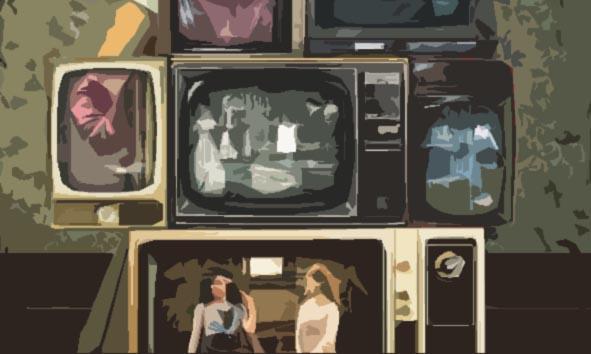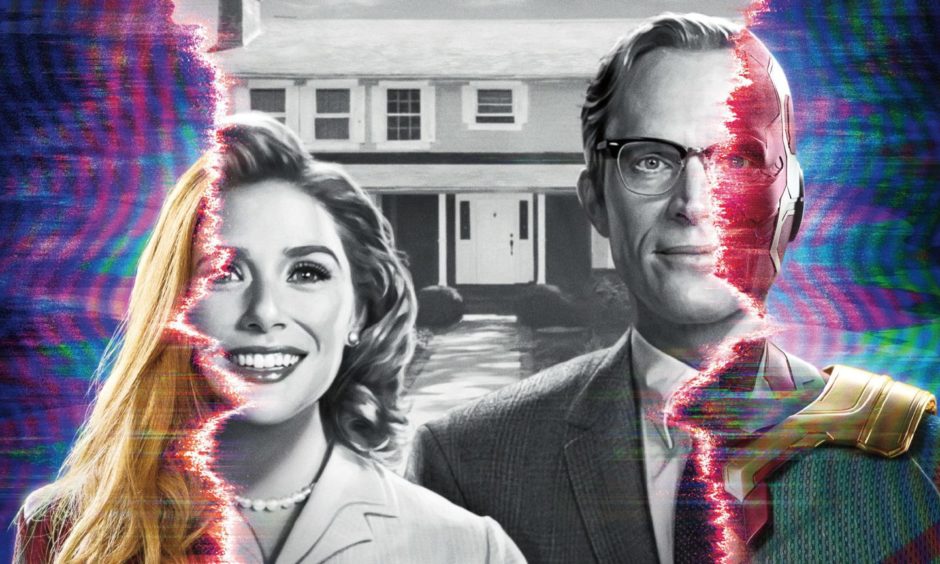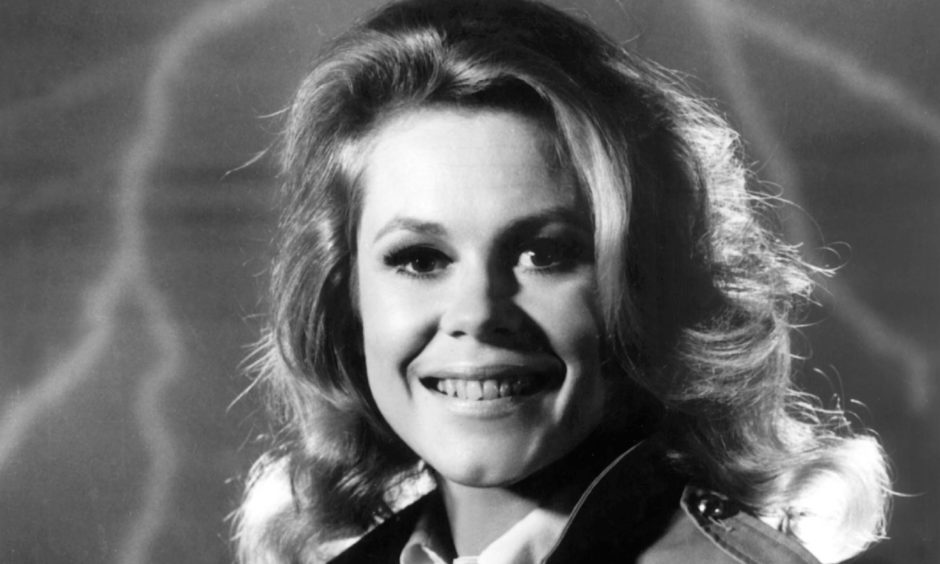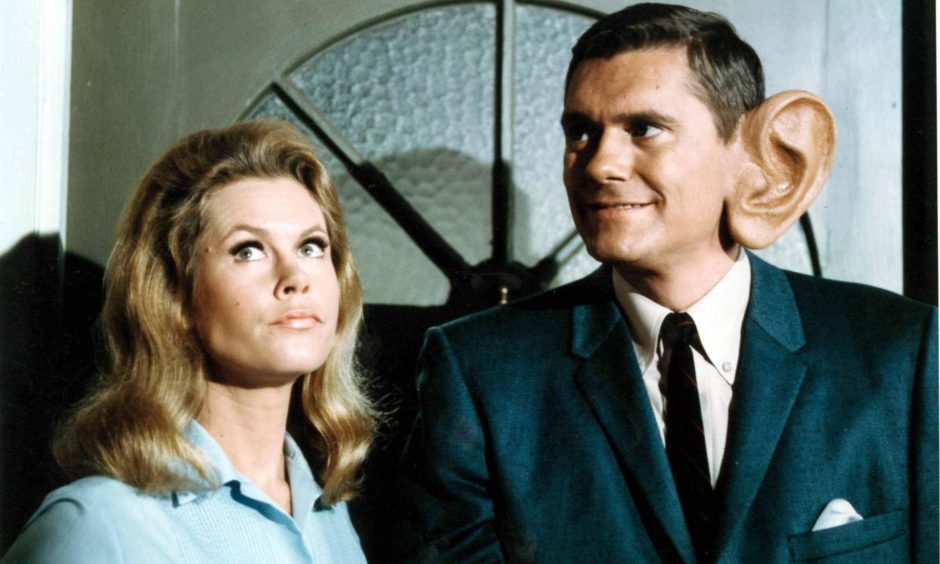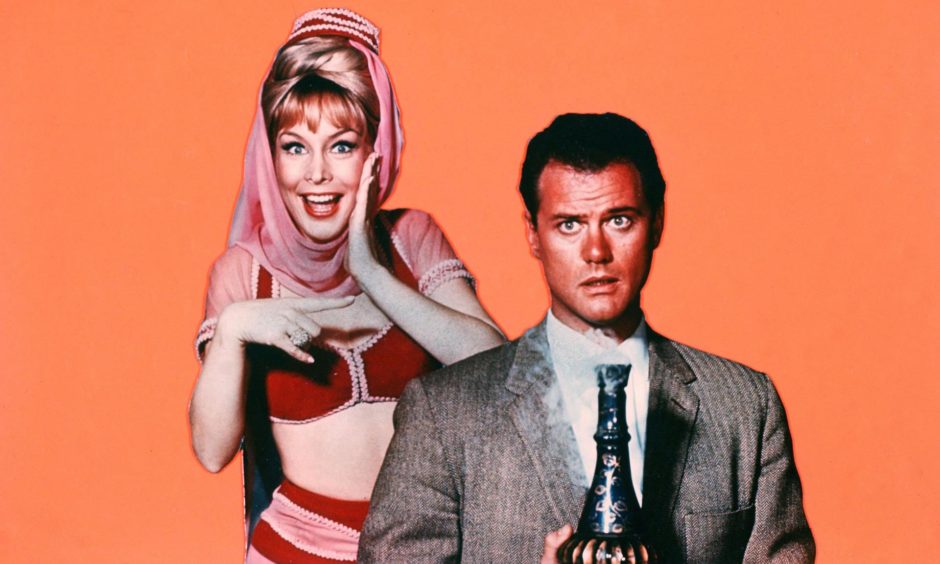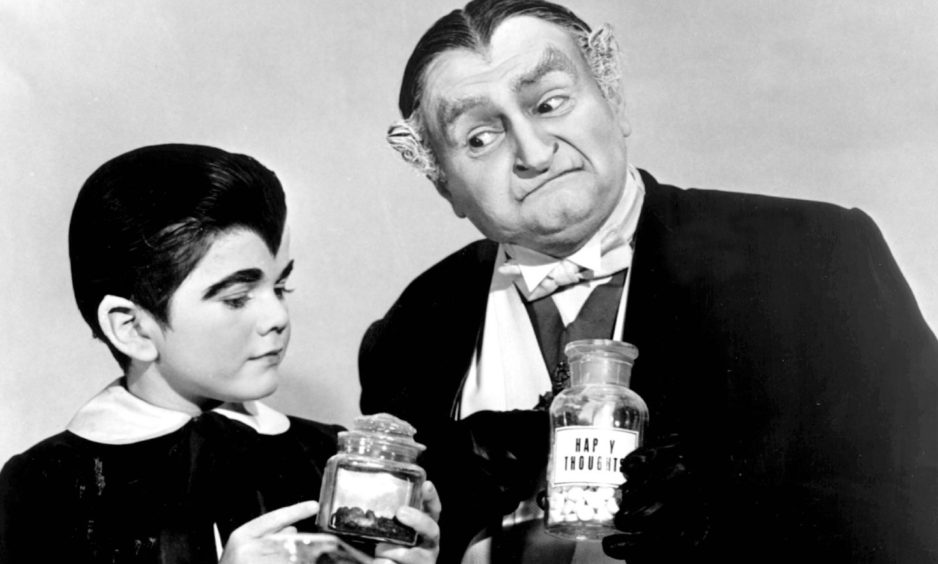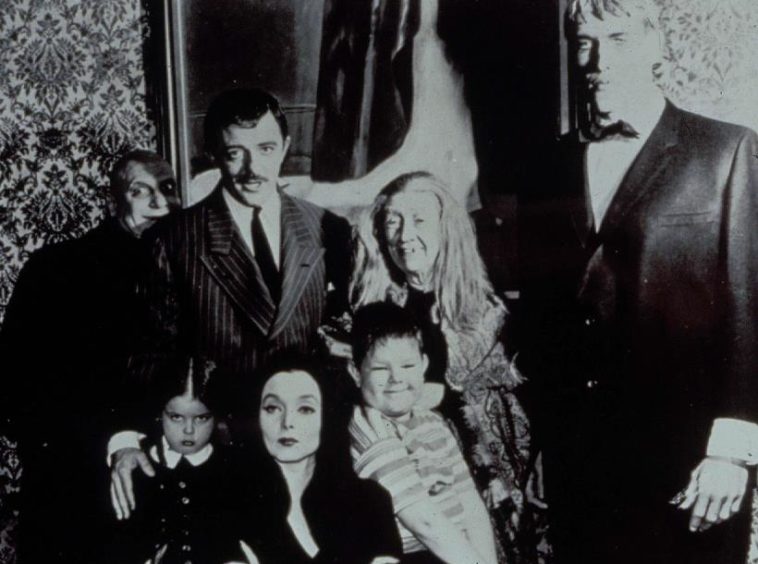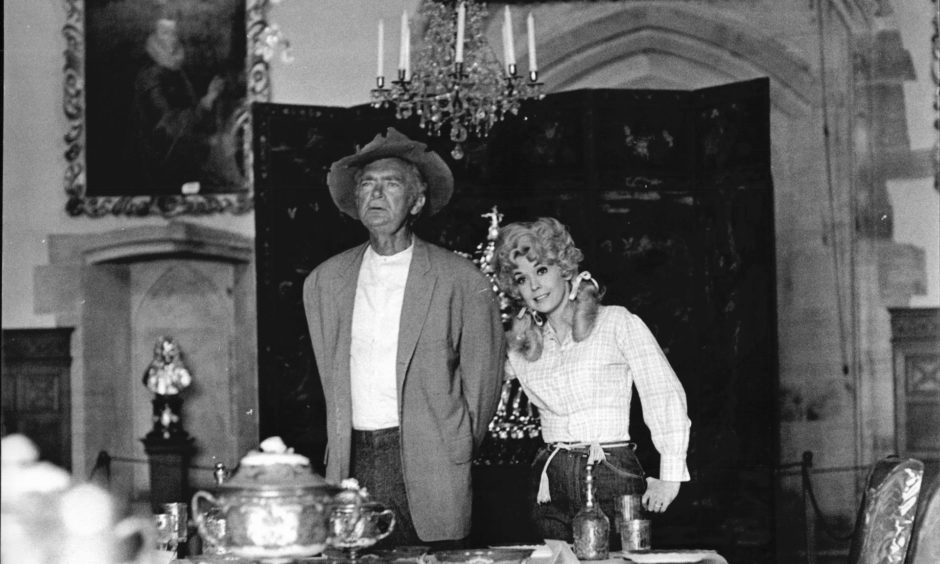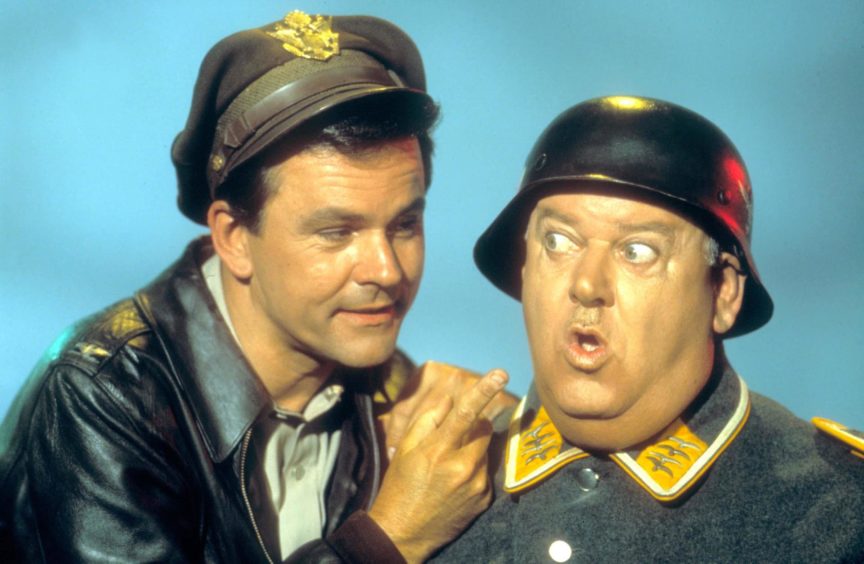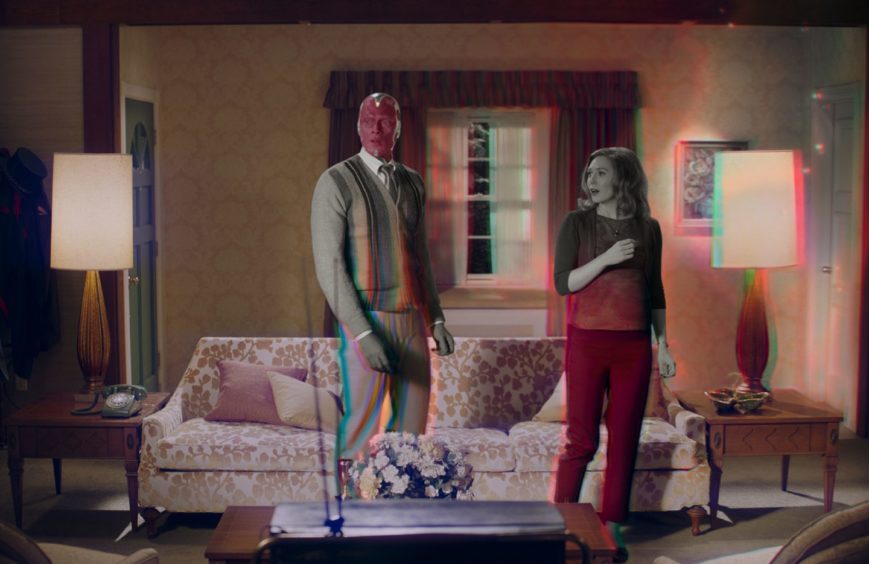Isn’t it funny how the future of TV can take you back to your earliest memories of the golden days of telly?
Take Disney+ for example, the latest streaming service joining the legion of others that let you choose what you want to watch when you want to watch it in this brave new world of television.
So, being a geek, I chose to watch WandaVision, the Marvel series built around the superhero characters of Vision and Scarlet Witch (or Wanda Maximoff when she’s not suited up).
The shtick plays out as a mystery as to why these two behemoths of the MCU (that is Marvel Cinematic Universe) seem to be playing out their lives as classic US sitcom characters.
‘Can’t miss’ list
However, the magic lies in the flawless recreation of the shows from the 60s that I grew up on. The first two episodes in black and white are an homage to Bewitched… which is about one of the first series I remember was on my “can’t miss” list as a wee boy.
From the facial expressions, to the canned laughter, the one-liners, the hokey story line and the absolute All-American Charm of it, WandaVision has the era nailed – and it brought back a flood of memories.
The original Bewitched had that earworm theme tune (you sing Bewitched in your head, even if it has no lyrics) and cartoon introduction that had me mesmerised as a kid.
Then there was the magic of lying in front of the telly in a 1960s council flat with your mum making mince in the scullery, while in front of you were houses with living rooms bigger than your entire hoose. Never mind that Samantha (Elizabeth Montgomery was my first crush) could work magic by twitching her nose… the real magic was electric kettles, massive screen TVs and cars that looked bigger than the bus you took into town.
The lifestyle was, of course, a myth about the American Dream. Hardly anyone lived like that in the States, let alone in a Scottish tenement, but as a kid, I bought it without question.
I loved the plots
And I loved the plots. Week in, week out, hapless mortal husband Darrin (Dick York was the best one) got into all sorts of scrapes and tangles until he worked out his witch wife was using her magic, even though she had promised not to.
And the next week, he got into more scrapes until he realised Samantha was using her magic. And the next week, he got into more scrapes until he realised… you get the idea.
These days I think Darrin is a dimwit and if a twitching nose gets your dinner on the table and keeps you in that lavish lifestyle without having to work, then wheesht. It would be like winning the EuroMillions jackpot then saying “no, unearned wealth is a curse… you just keep it.”
Bewitched was a gateway drug to a whole panoply of US sitcoms for a generation of kids in this country. American television being American television, imitation is the sincerest form of flattery.
The ABC network had a huge hit with its comedy fantasy show, so NBC breenjed in with I Dream Of Jeannie. Instead of a witch, you had a female genie (see what they did there) found in a bottle by an astronaut when his capsule comes down on a desert island. Instead of a twitching nose, Jeanie crossed her arms and blinked to work magic – even though her new “master” didn’t want her to.
And each week, he got into more scrapes until he realised… yeah, that again.
Shows were a monster success
My memories of I Dream Of Jeanie are more vague than of Bewitched, other than thinking it must be rubbish to live in a bottle. Barbara Eden’s risqué costumes for the era went over my head and I was disappointed a programme with an astronaut didn’t have more space stuff. In fact, the only time I brought the show back to mind was when the actor who played the spaceman turned up years later in Dallas – as JR Ewing no less. Larry Hagman had a varied career, didn’t he?
The fantasy genre was obviously keeping the networks in money – and the ratings up in the UK – as the next outing was also a monster success.
For me, The Munsters ruled supreme.
A family of the sort of creatures that would attract a pitchfork and torch mob – vampires, Frankenstein-style monsters, werewolves – they try to blend into small town American life – although their big house wasn’t so much sleek and modern as dusty and gothic.
At the time, I thought it was a lark about the father of the house, Herman Munster (the inimitable Fred Gwynne) getting into trouble by pretending to be normal and not quite managing. However, this pastiche between wholesome American sitcoms and an homage to the classic monsters of Universal films was quite satirical and subversive in its day.
It, gently, ripped the idea of conformity while delivering messages about equality with a mix of laughs, schmaltz and bite. Daring for mainstream US telly in 1964.
Remember that thing about success begets success? The Munsters was on CBS and over on ABC was The Addams Family. It was about (see description of The Munsters above).
In fairness, The Addams were characters that seemed to take more traction with popular culture. You still get folk going to fancy dress parties as the vampish Morticia and we all know someone who has been called Lurch in their time.
Kooky and creepy
Maybe it was the theme tune? “They’re kooky and their creepy…” bet you’re about to snap your fingers.
As a footnote, The Addams Family were based on a series of cartoons in the New Yorker by Charles Addams. They’re funny… if your sense of humour veers towards the pitch black. I love them.
Of course, classic US sitcoms weren’t all fantasy and the supernatural. You had I Love Lucy, hailed as an all-time classic. Okay, it was the 50s not 60s, but in my younger days it was shown on almost endless repeat. I don’t remember much about Lucille Ball, except I could never figure out why that crying and wailing was deemed to be amusing. No thanks… my folks didn’t care for it either. The channel was changed to some better home-spun British variety show, usually involving Des O’Connor.
Then there were The Beverley Hillbillies (another good theme tune). That said if you substitute a family of monsters trying to fit in with small town American life for a family of hillbillies settling in Beverley Hills, they are pretty much the same thing.
Encouragement to ignorance
And as for the plot, well, every week a greedy banker tries to keep the Clampetts money while a neighbour tries to get rid of “those hillbillies”. Every week the Clampetts win out. I just thought the Granny was funny… that would the abrasive, Confederate-supporting one, swilling illicit hooch. Oh, changed days. For the record, the critics hated it when it first came out. Even one who liked it said it was “an encouragement to ignorance… but it is funny. What can I do?” Wonder if he was around for the Trump era?
Perhaps one of the strangest comedy concepts of the 60s was Hogan’s Heroes. Bearing in mind this was just 20 years after the end of the Second World War (for context it’s 20 years since the first Harry Potter film came out – aye, that’ll age you).
So, with the horror of war still fresh in many minds, let’s play a Nazi prisoner-of-war camp for laughs with a “lovable” comedy German prison guard with his very own hilarious catchphrase. At least the Beeb waited the better part of 40 years before foisting ‘Allo ‘Allo on us.
Fast forward then to WandaVision, where I’m two episodes in, the mystery is deepening and their sitcom lives have just morphed into colour and moving forward in time, suggesting more sitcom homages to come.
I can’t wait to see how it plays out – although I doubt Hogan’s Heroes will be in the mix.
